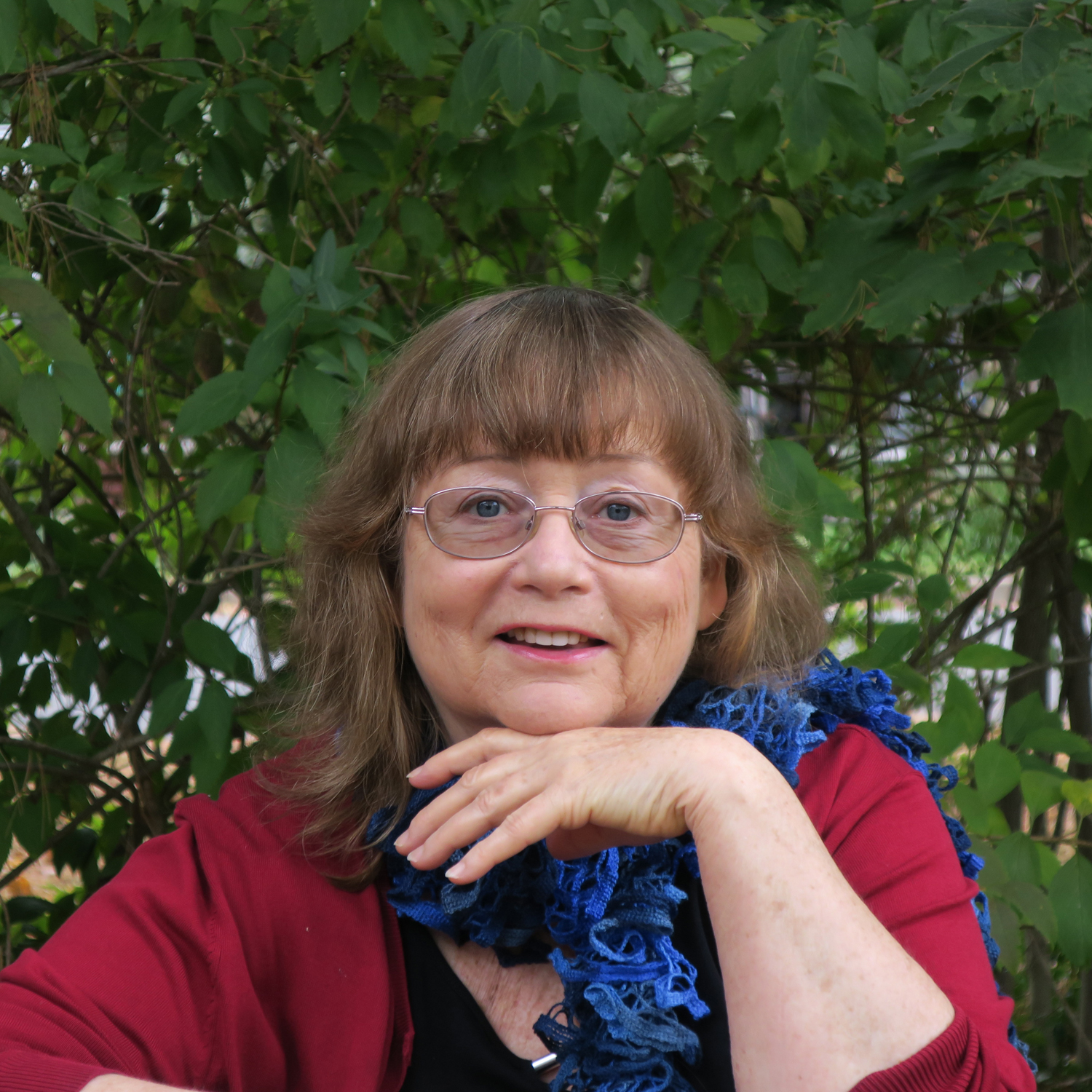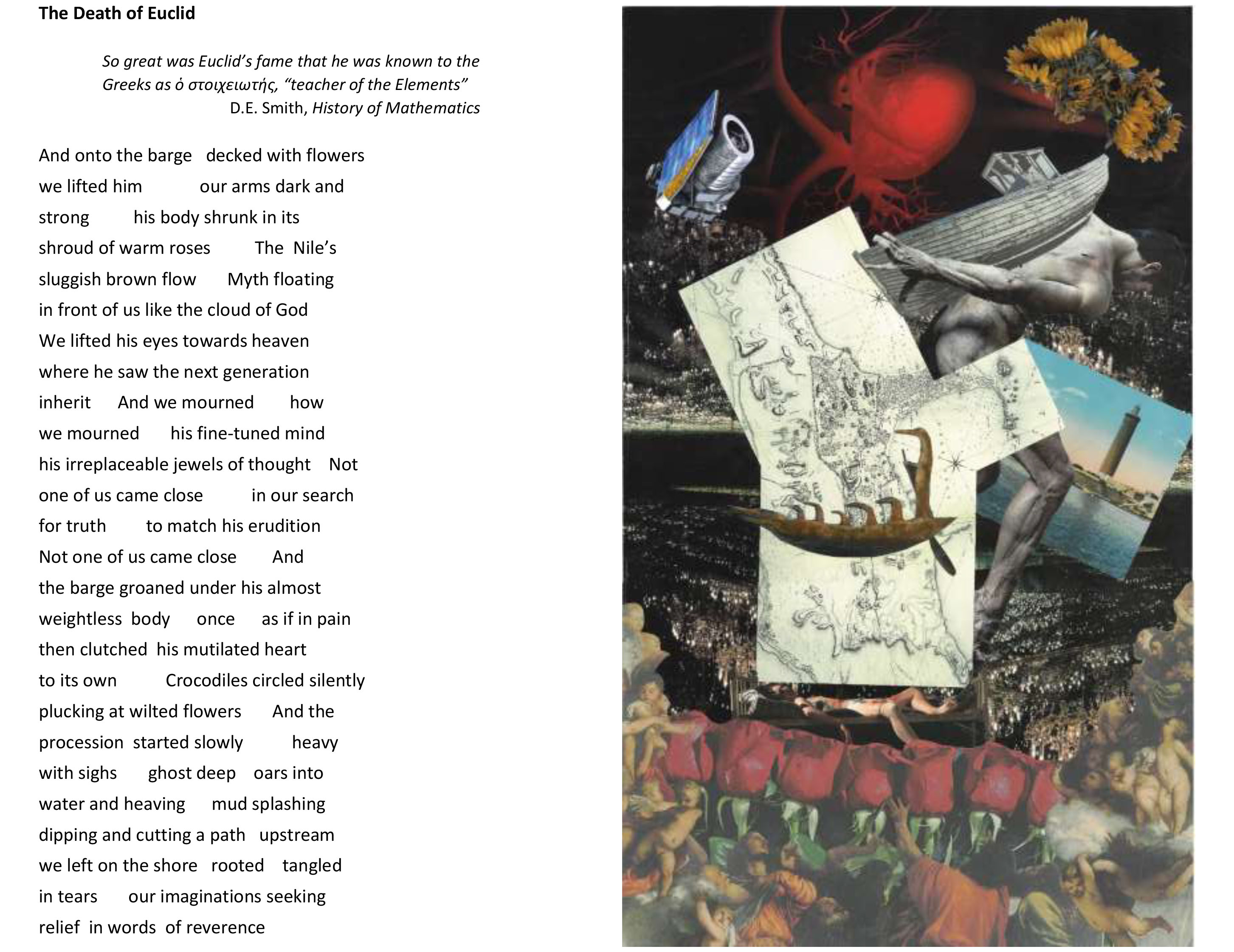A Poem - Collage Project
Poem by Sarah Glaz with Collage by Mark Sanders
The poem-collage pair appears in the Bridges 2022 online art gallery: https://gallery.bridgesmathart.org/exhibitions/2022-bridges-conference/sarahglaz
 |
 |
History, Mathematics, Poem, Collage
Euclid
(323 - 285 BCE) lived in Alexandria, a Greek city situated in
Egypt at the mouth of the Nile river.
The
early Ptolemies devoted themselves to making Alexandria the
center of Hellenistic intellectual life. They built the Museum
(seat of the muses), a forerunner of the modern university, and
its legendary Library of Alexandria, which housed the largest
collections of papyrus scrolls in the ancient world. The Museum
was an institute of research and pursuit of learning, attracting
a large number of scholars from the entire Hellenistic world. In
particular, under the royal patronage, science and mathematics
flourished at the Museum like in very few other periods of time
in history. One of the scientific achievements of this period
was the building of the Pharos lighthouse, which guided the
merchant ships arriving at the port of Alexandria, an
engineering marvel considered to be one of the Seven Wonders of
the Ancient World. Euclid might have witnessed the early stages
of its construction.
Euclid
founded a school and taught mathematics at the Museum. Very
little else is known about his life with any degree of
certainty. Some historical sources claim that he received his
mathematical training at the Athens Academy and was brought to
Alexandria by Ptolemy I for the purpose of setting up the school
of mathematics at the Museum. During its several
hundred years of existence, the Museum produced many other
distinguished scholars whose work determined the course of
future mathematics. Archimedes, Eratosthenes, Apollonius,
Pappus, Claudius Ptolemy, Diophantus, and Hypatia were all
educated or otherwise affiliated with the Museum and trained in
the mathematical tradition established by Euclid. In this way,
the mathematicians of the ancient world, and by extension all
the mathematicians who came after, may be considered to be
students of Euclid.
Although
Euclid authored at least ten works, his fame rests almost
exclusively on The Elements, a book that had profound
impact on Western thought,
and set the foundation for mathematical standards of
reasoning for all times. Only the Bible has been more widely
reprinted and studied. The Elements is a compilation of
the most important mathematical facts available at that time,
containing 465 propositions from plane and solid geometry and
from number theory. This superbly organized treatise, which
furnished proofs in an axiomatic framework, was so successful
that it obliterated all previous such compilations and became
the standard school textbook for the study of geometry and
logical thinking for 20 centuries.
The
poem "The Death of Euclid" was inspired by the magnitude of
Euclid's impact as a teacher, the exotic locale in which he
lived and worked, and the scarcity of information about his
life, which allowed the poet to give free reign to her
imagination. The
poem first appeared in Ode
to Numbers by Sarah Glaz (Antrim House, 2017).
The
imagery in the collage reflects, as well as extends, the
imagery of the poem. The map section
of Alexandria in the center is cut into the outline of the "Windmill diagram" used by Euclid in The Elements
to prove the Pythagorean Theorem. The boat across
the center of the map fragment, is crewed by a host of
crocodiles. This is a detail from a painting by Leonora
Carrington entitled "How Doth the Little Crocodile," after a
poem from Alice's Adventures in Wonderland, which was
authored by Lewis Carroll. Although best known for his Alice
stories, Carroll spent his life primarily as a mathematician. Floating in space in the upper left
corner, is the Space Telescope which bears Euclid's name; as
generations far beyond his lifetime use his work to advance
our understanding of mathematics in the universe. For more
details, see Mark's Dissecting
The Death of Euclid.
Many
thanks to Kevin Marinelli for the technical expertise with
which he formatted the poem-collage pair to Bridges Art
Exhibit specifications.
